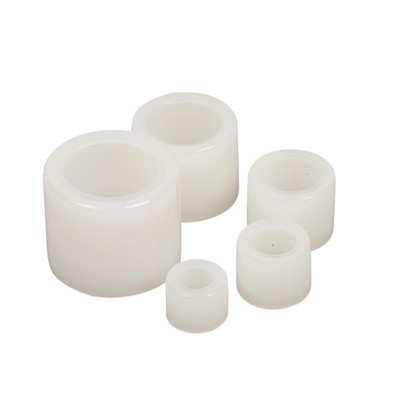Do Buried PE Pipes Still Require Anti-corrosion Treatment
Leave a message
One of the advantages of PE pipes is their resistance to acid and alkali corrosion, so there is no need to prevent corrosion. However, the disadvantage of PE pipes is that they lack strength and oxidation resistance, and creep occurs when the temperature increases, and they are prone to rupture when the temperature drops. Polyethylene pipes have lower strength than metal pipes and are sensitive to temperature changes. Therefore, it is important to pay attention to burial depth, stay away from heat pipes, and avoid other pipes. The power cord is in the same trench. In special circumstances, you need to maintain a certain distance and take special measures according to the standard, up, down, left, and right. When laying in a serpentine shape, the linear expansion coefficient of polyethylene pipes is more than 10 times larger than that of metals. Therefore, it can be laid according to the flexible twisting of the PE pipes, which can generate terrain and curves, but the bending radius must meet the requirements.
50mm ≤ pipe diameter D ≤ 160mm, the allowable bending radius R should be pipe diameter 50D. If there are joints in the pipe section, it must be at least 125D. Backfilling requirements
After laying the polyethylene pipe, it should be immediately covered with fine soil or sand, with a thickness greater than 30cm, to avoid damage to the polyethylene pipe by external forces.
2. Trench backfilling should first fill the bottom of the pipeline, then refill the pipeline from both sides, and then fill the top of the pipeline by about 50 centimeters (if there is water in the ditch). Later added.
3. Under safe construction conditions, as backfilling proceeds, the support of the trench must be removed, and after removing the vertical pile, the gap must be filled with sand.
4. Within 50 centimeters of the top of the backfill pipeline on both sides, the top of the pipeline should not contain crushed stones, such as crushed stones, bricks, garbage, etc. Frozen soil should not be used to fill the backfill material. The soil can contain a small amount of stones and frozen soil with a diameter of 10 centimeters or less, and should not exceed 15% of the total loading amount.
Backfilling should be compressed in layers, with a thickness of 20-30 centimeters per layer. Backfilling should be manually compressed on both sides of the pipeline and within 50 centimeters of the top of the pipeline. If the backfill is 50 centimeters above the top of the pipeline, mechanical compression is possible. It should be 25-40 centimeters.
The miniaturization of each part of the groove should meet the following requirements:
A. Fill (I) 95%; B. Pipe top 50 cm (II) 85%; C. (III) 50 centimeters above the ground, 95% in urban areas, and 90% in cultivated land. To protect the PE pipeline from accidental damage during oral work, a warning tape is released on the vertical surface of the pipeline 50 centimeters away from the top of the pipeline. Warning tapes are used to remind third parties to sell warning tapes when making them. Below is the polyethylene pipe, carefully open the cavity to avoid damaging the PE gas pipeline.







